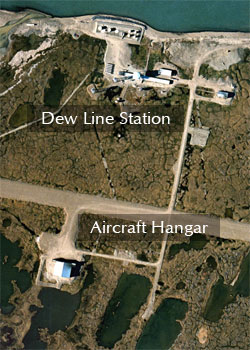
After more than a year and a half of planning, proposals, and paperwork, management staff at the ARM Climate Research Facility North Slope of Alaska (NSA) locale recently received permission from the United States Air Force (USAF) to use their facilities at Oliktok Point, Alaska, for the ARM Program’s upcoming Mixed-Phase Arctic Cloud Experiment (M-PACE). In addition, in June, the Federal Aviation Administration (FAA) granted approval for the use of restricted airspace (albeit at night) in Oliktok during the experiment. Gaining the necessary approvals reflects a strong commitment to cooperation between the various agencies, and represents a big step forward in preparing for the experiment, which is scheduled to begin in September 2004.
The objective of M-PACE is to collect a focused set of observations for examining the microphysical and radiative transfer process of mixed-phase clouds, which dominate low-lying cloud systems in the arctic. An important part of the experimental plan is to fly an instrumented, tethered balloon to make in situ measurements in the clouds while observing the same clouds from instrumentation on the ground. Oliktok Point was identified as the only place on the NSA that the FAA would agree to for flying tethered balloons in clouds. This led to the hunt for an accompanying ground-based instrument location. A commercial location was considered and rejected, leaving the USAF Oliktok Point Long Range Radar Station the only option. In April 2003, the first briefing to USAF officials at Elmendorf Air Force Base in Anchorage, Alaska, took place. Thus began a year of subsequent administrative actions, concluding with a final USAF permit signed by the Department of Energy. When received back at USAF, their additional signature will seal the deal.
In spite of the lengthy legal requirements, NSA staff managed to gain the necessary approvals spanning from Anchorage to Hawaii and points between. On the outside chance another ARM experiment might need to use the USAF facilities and FAA restricted air space permit for Oliktok, both permission are good for the next five years!

